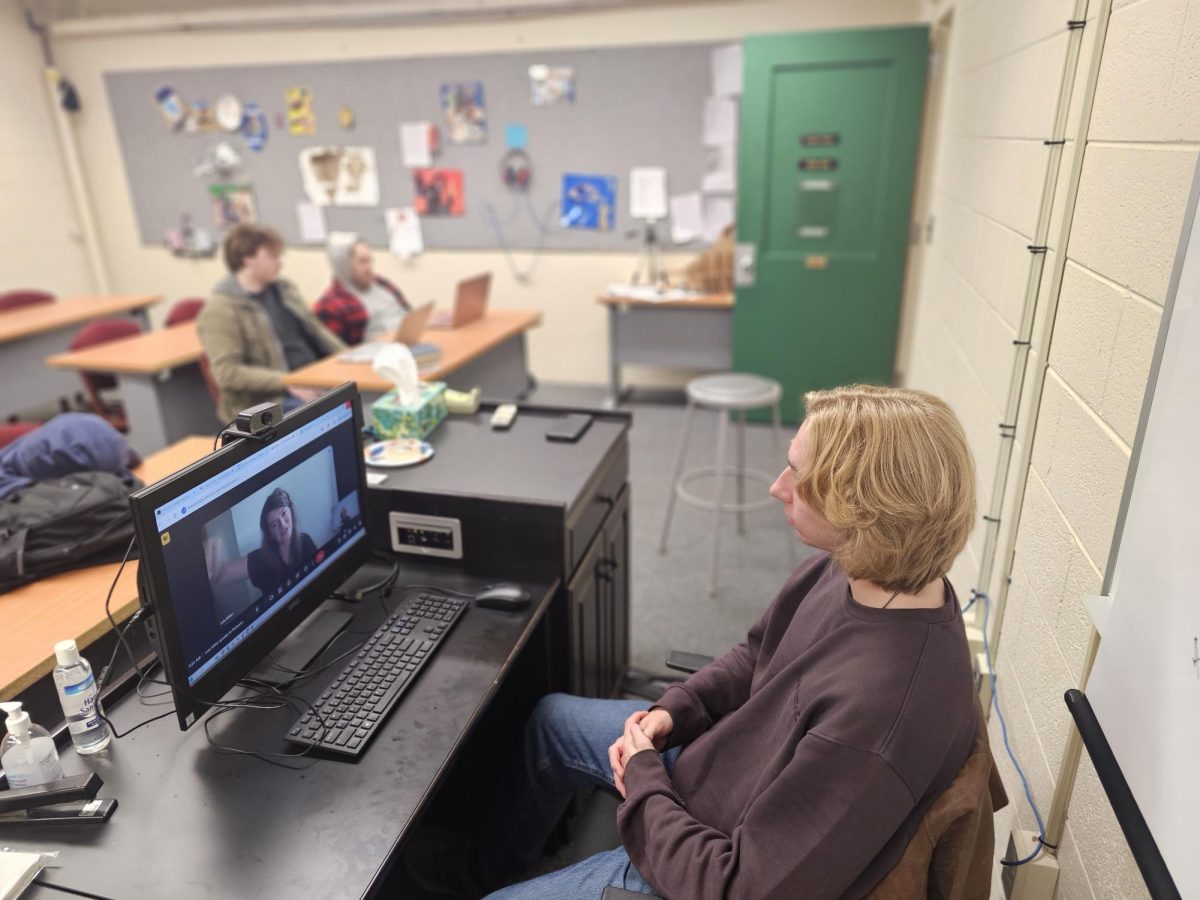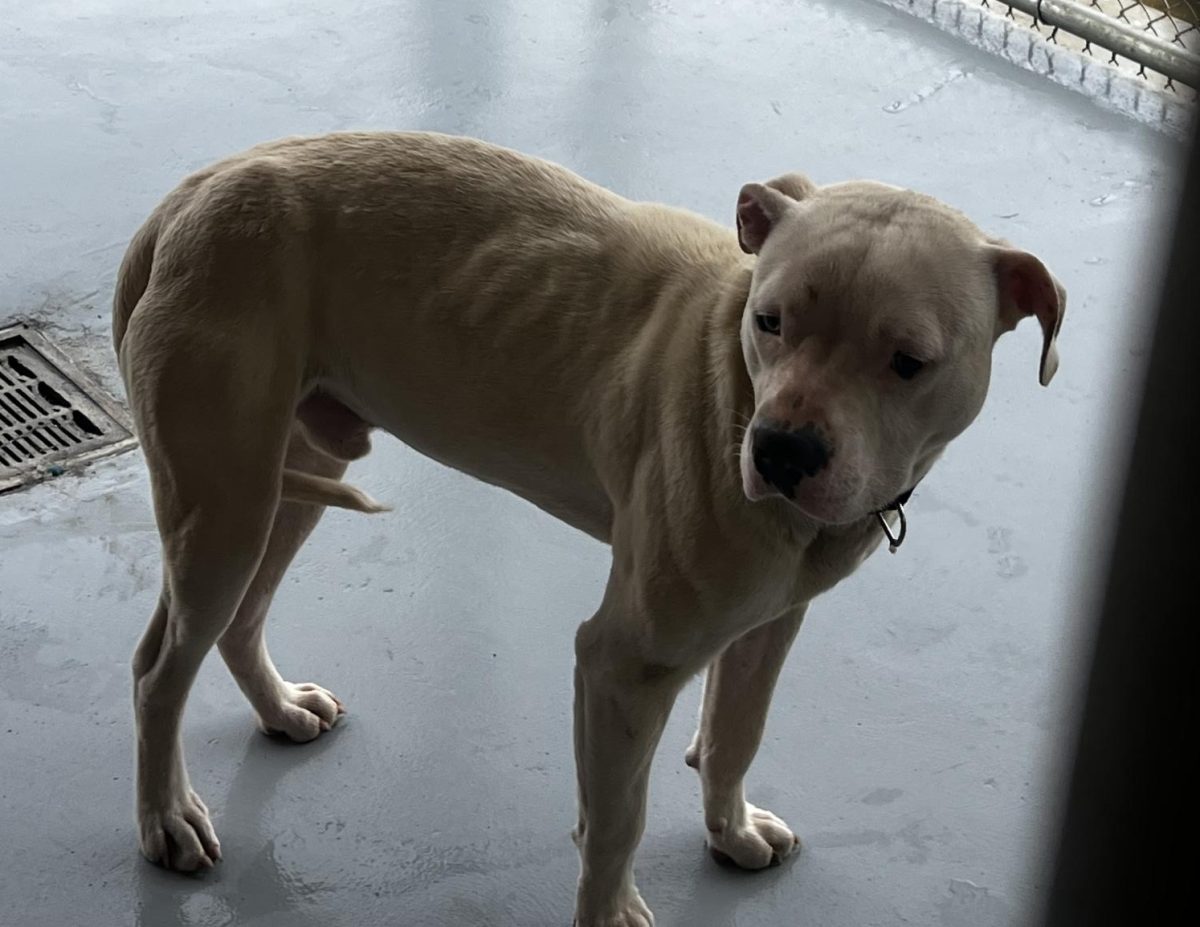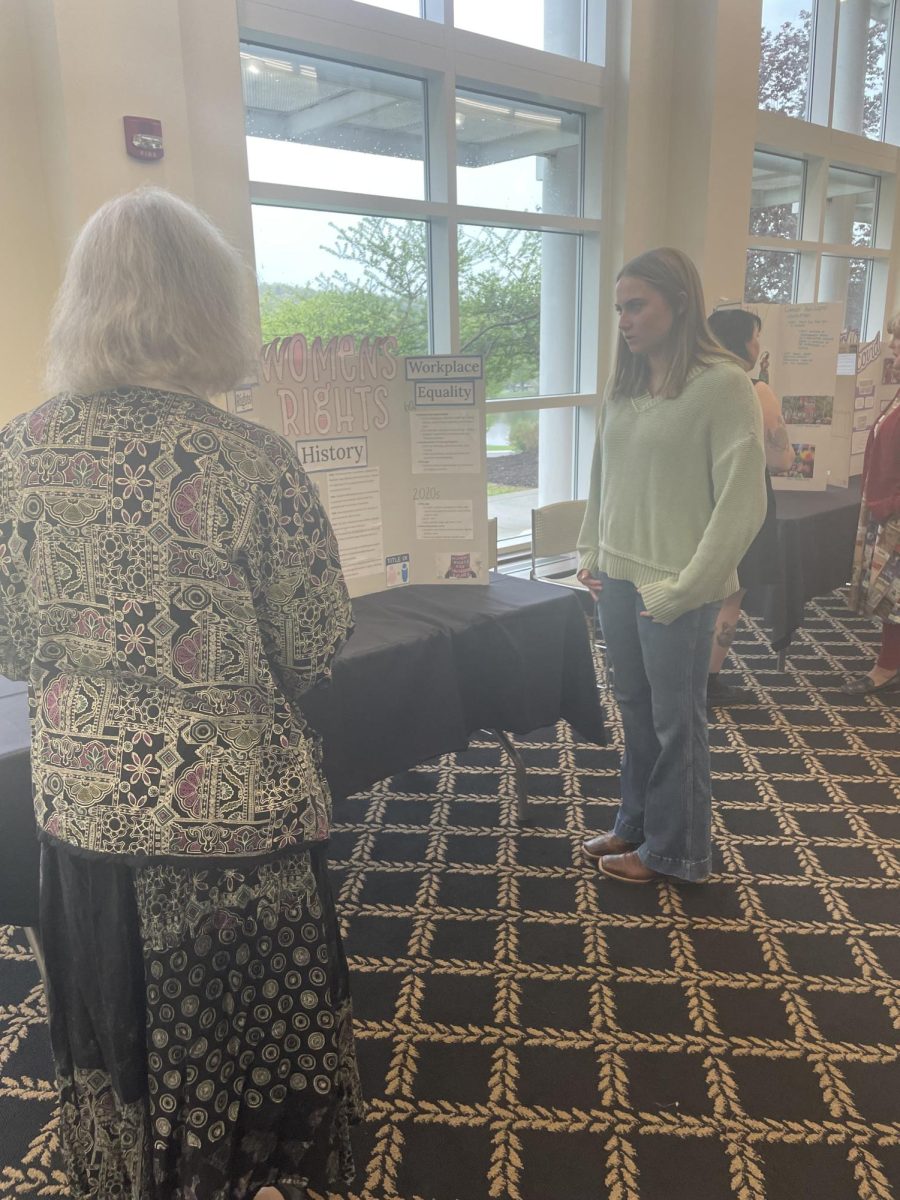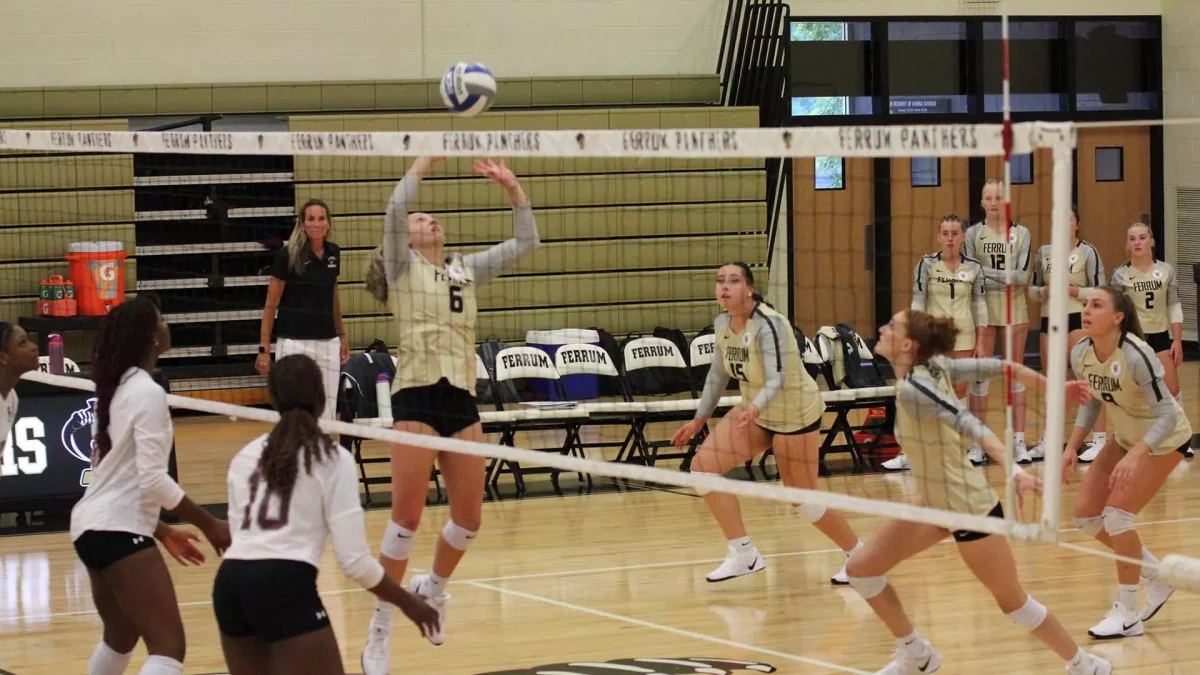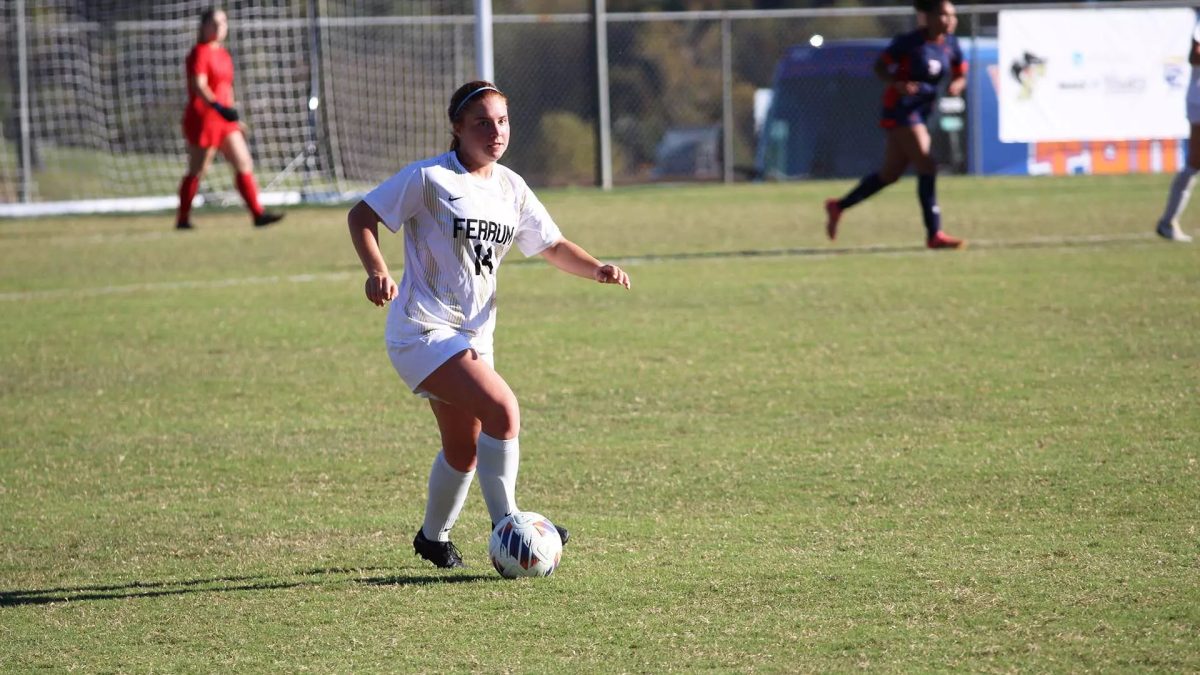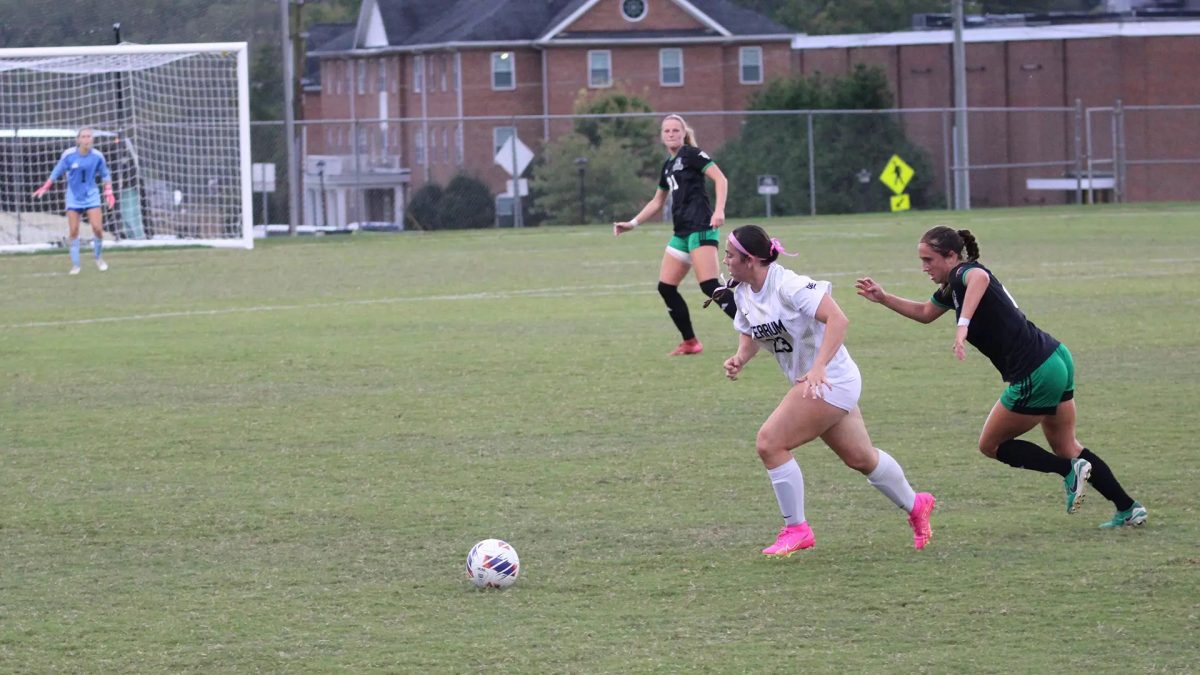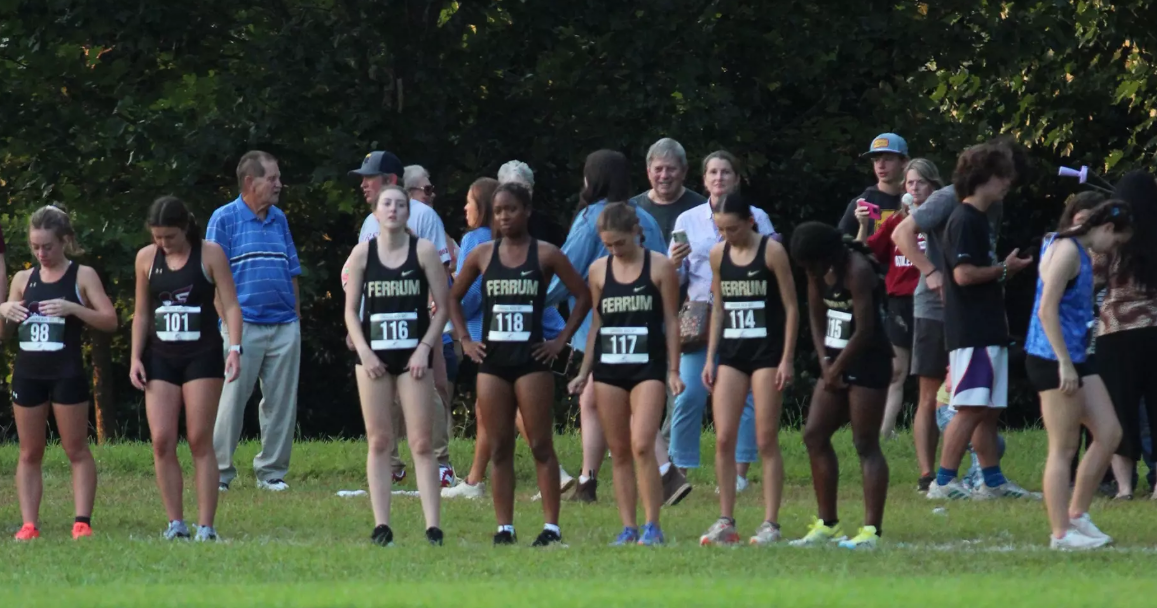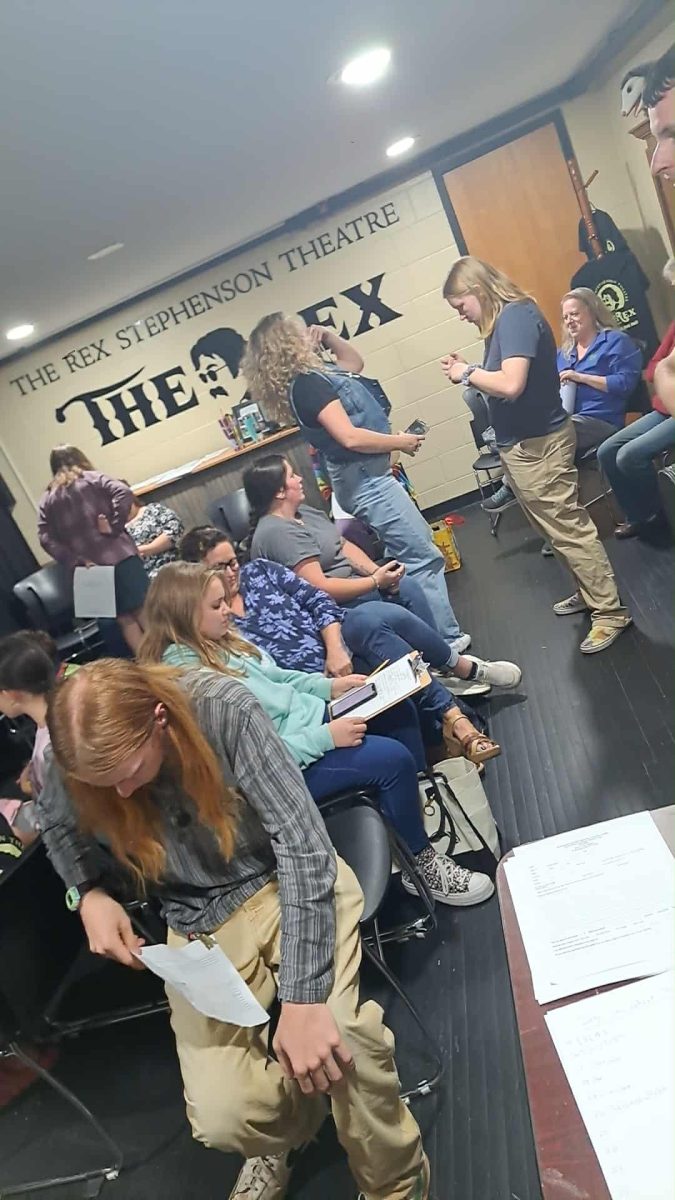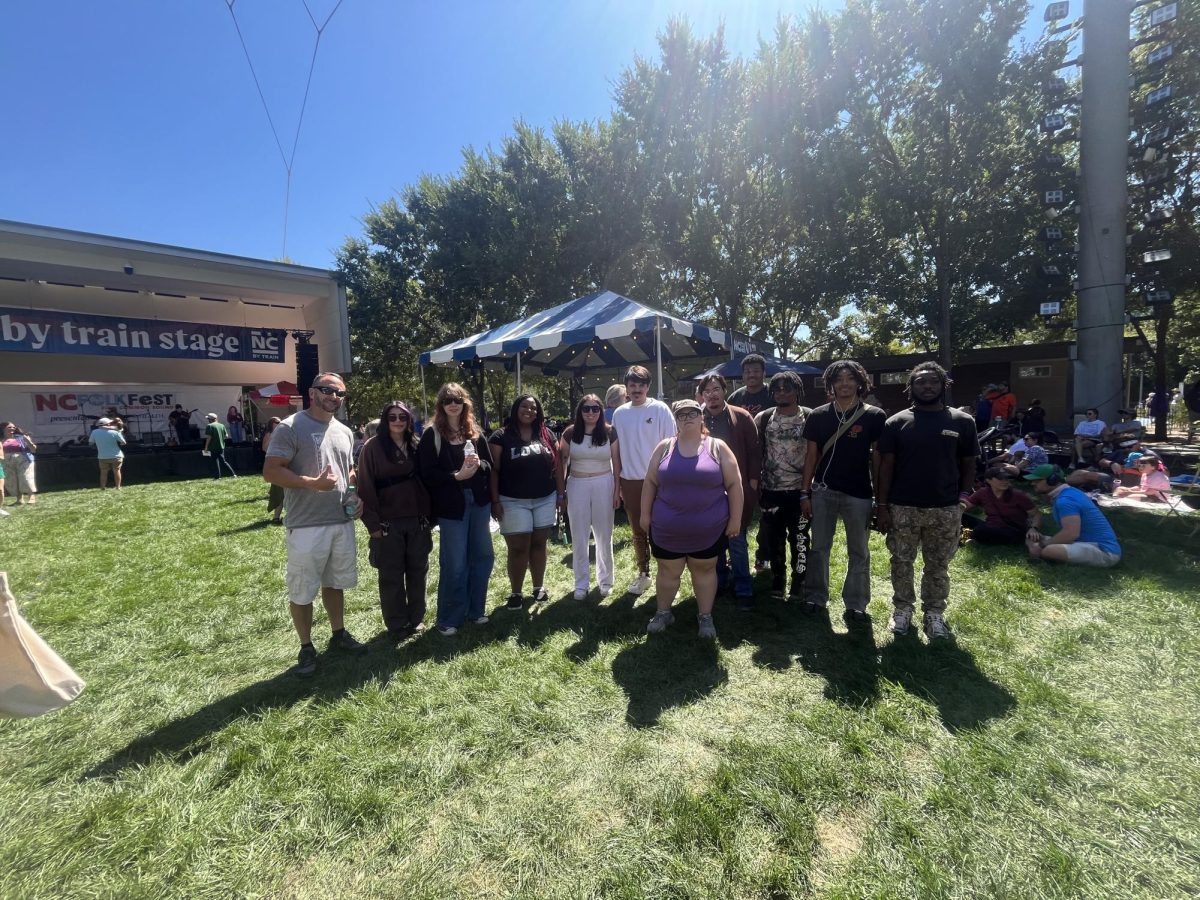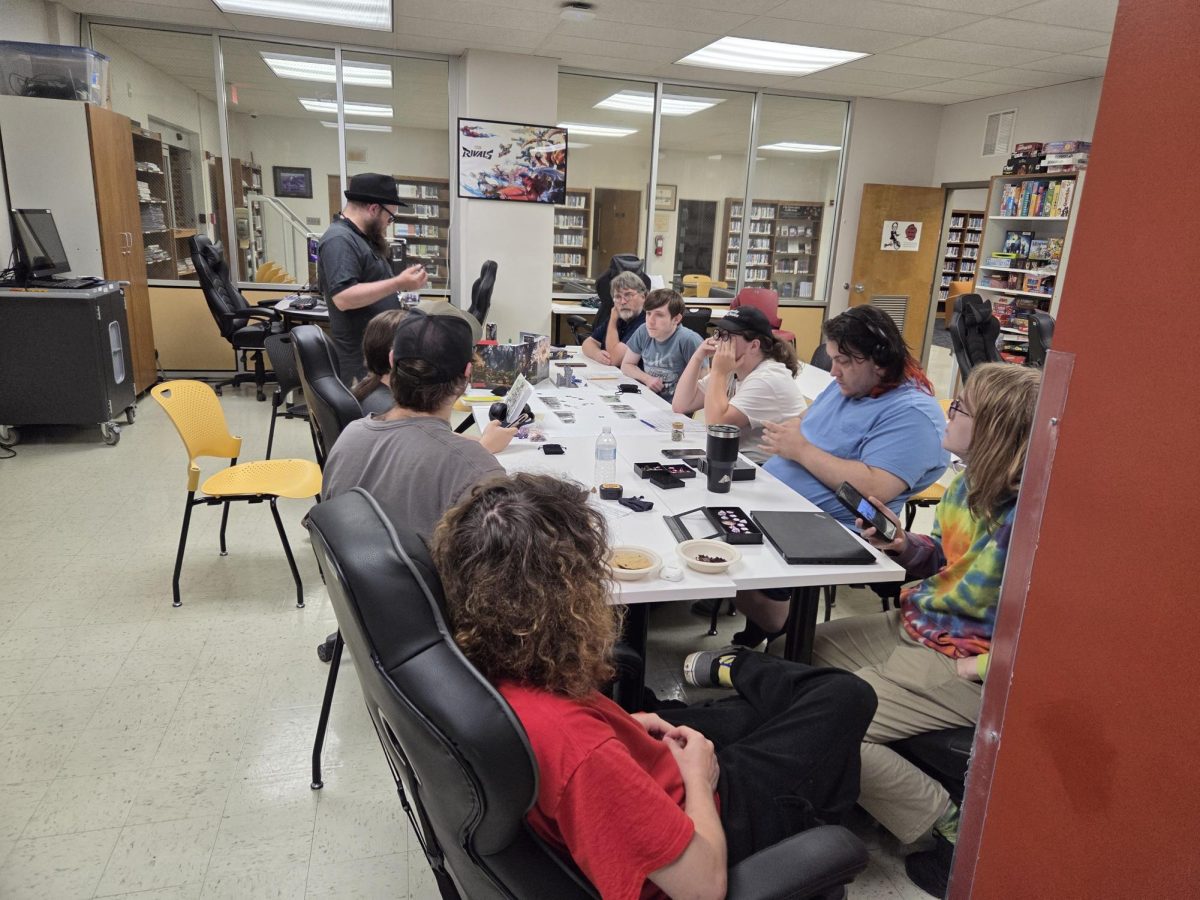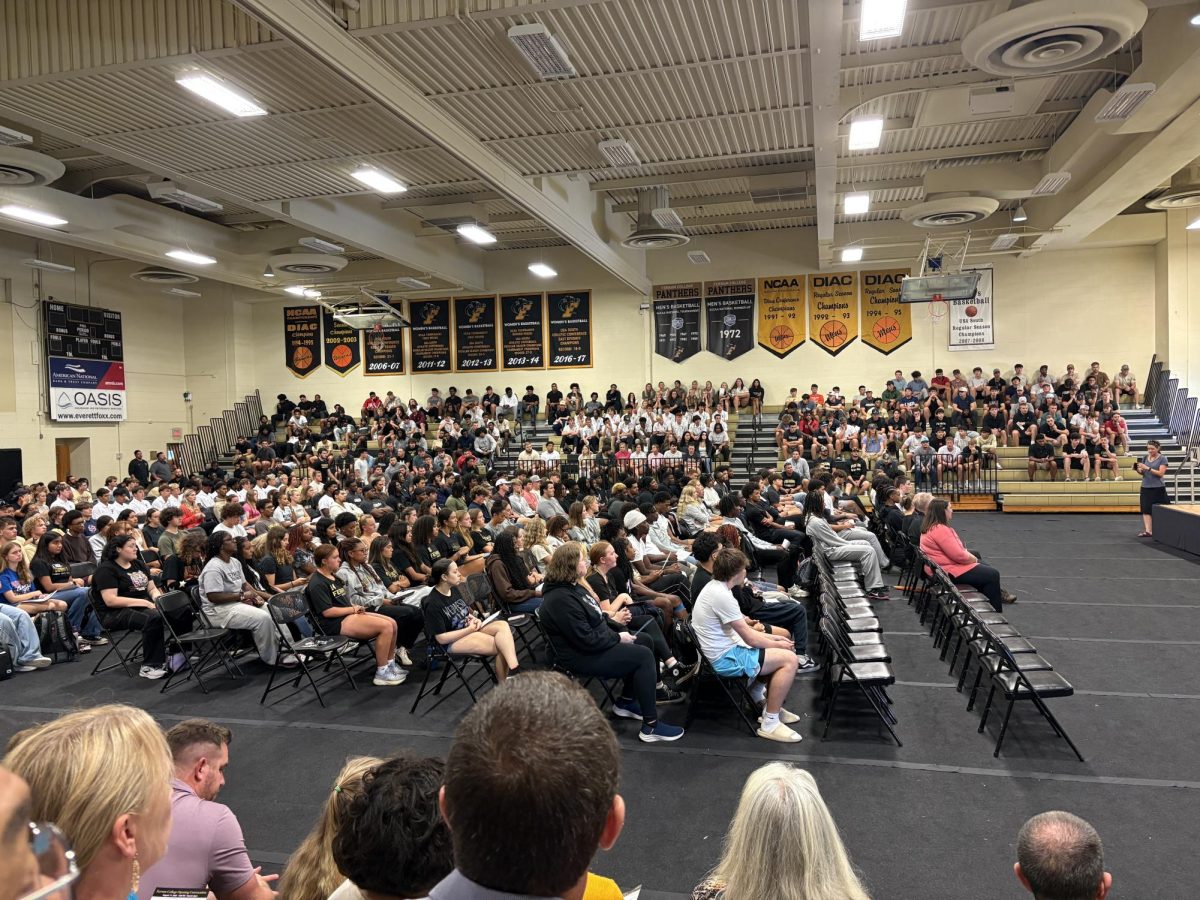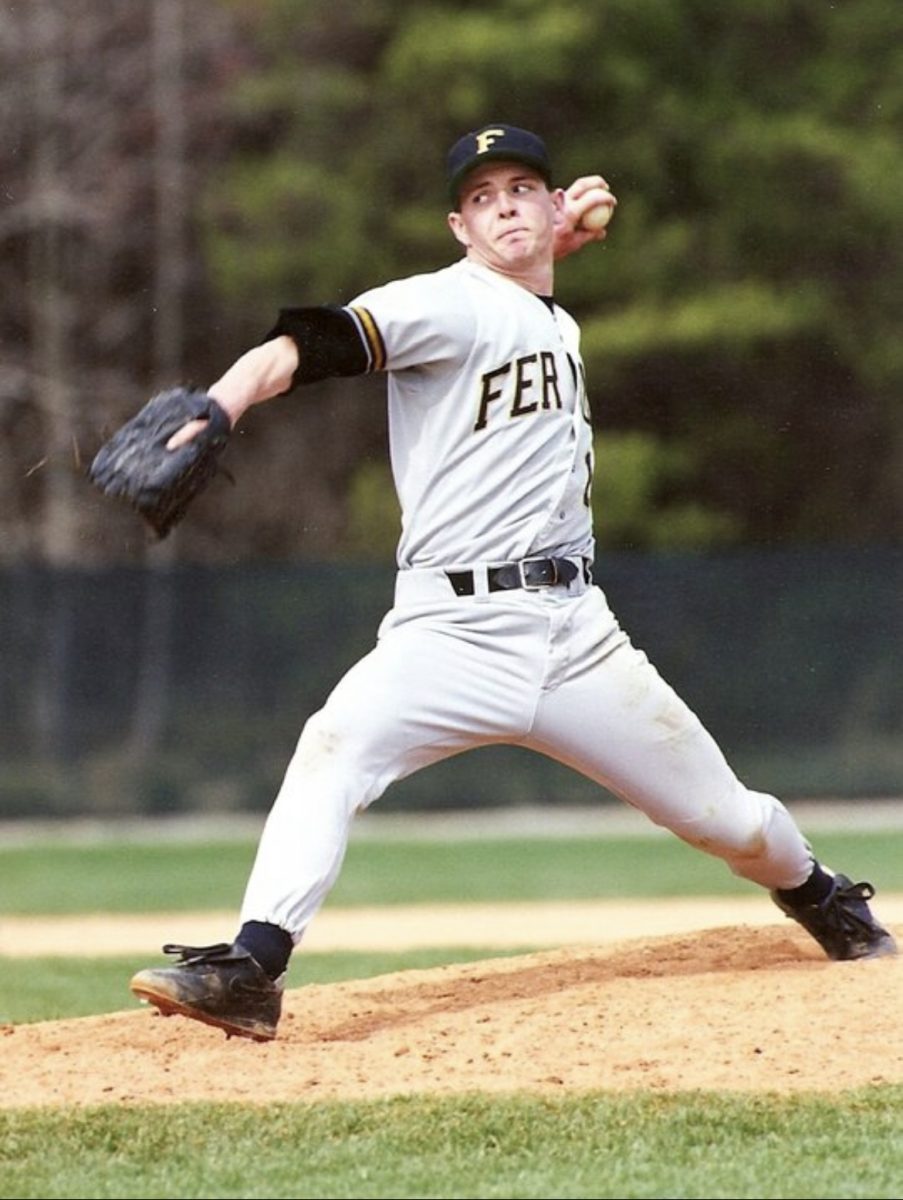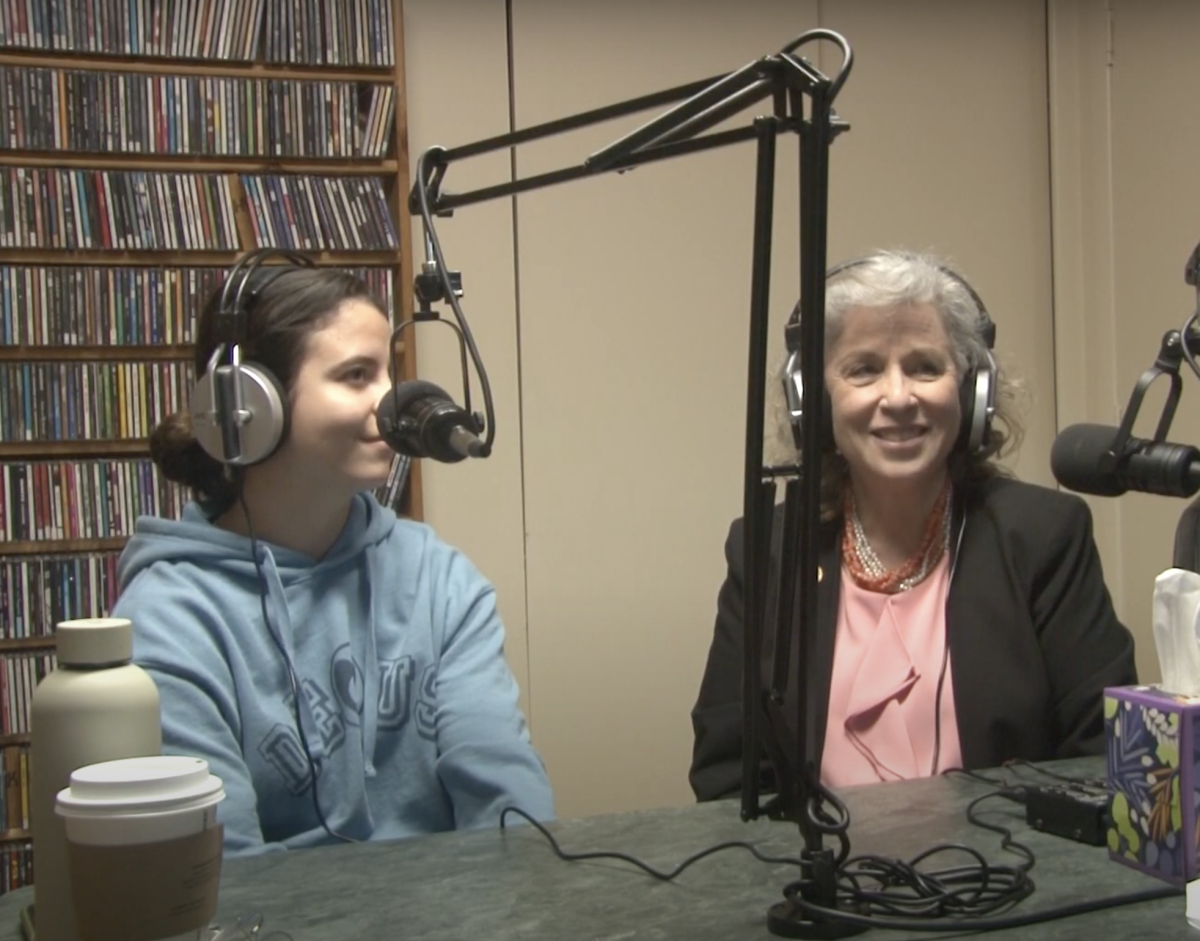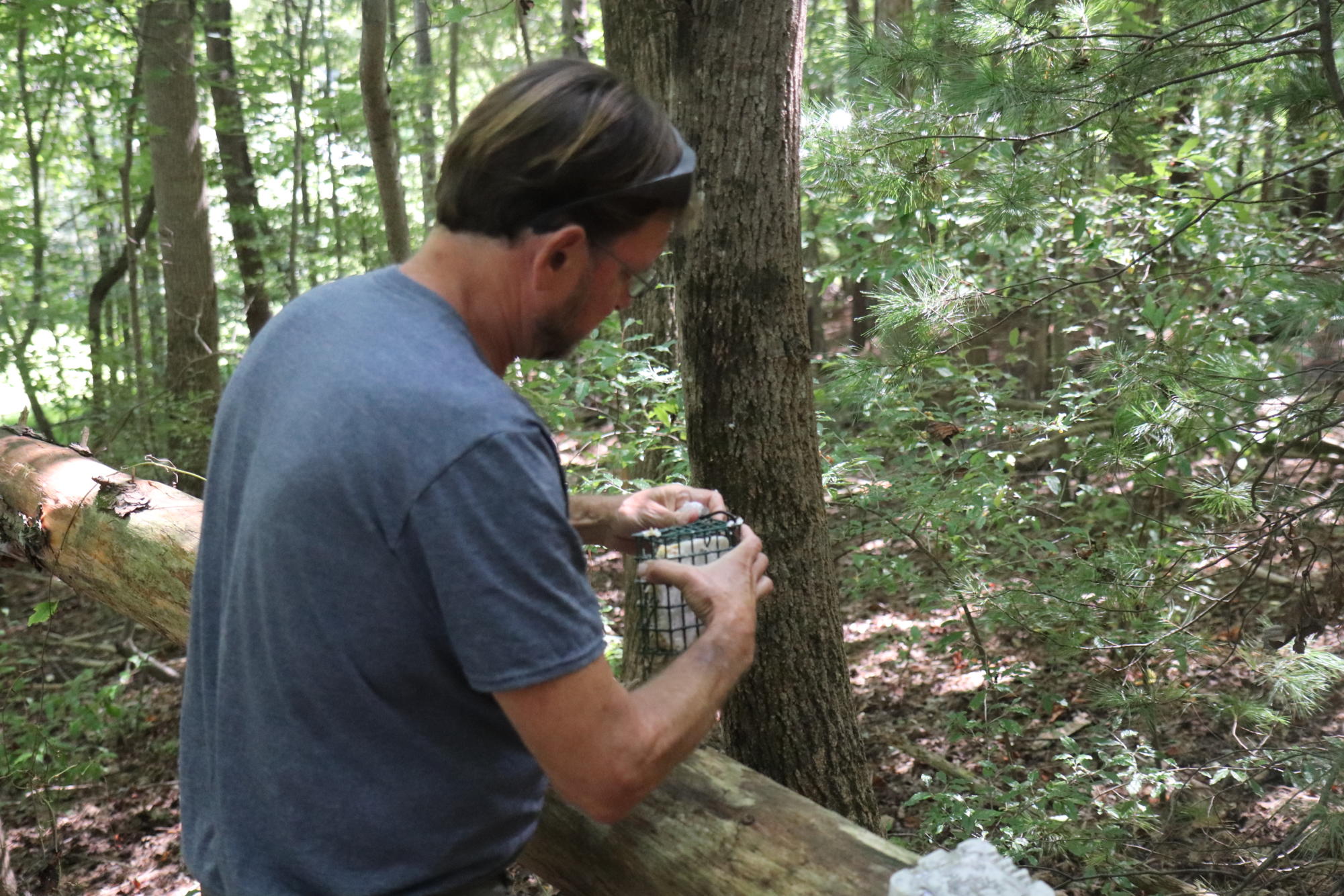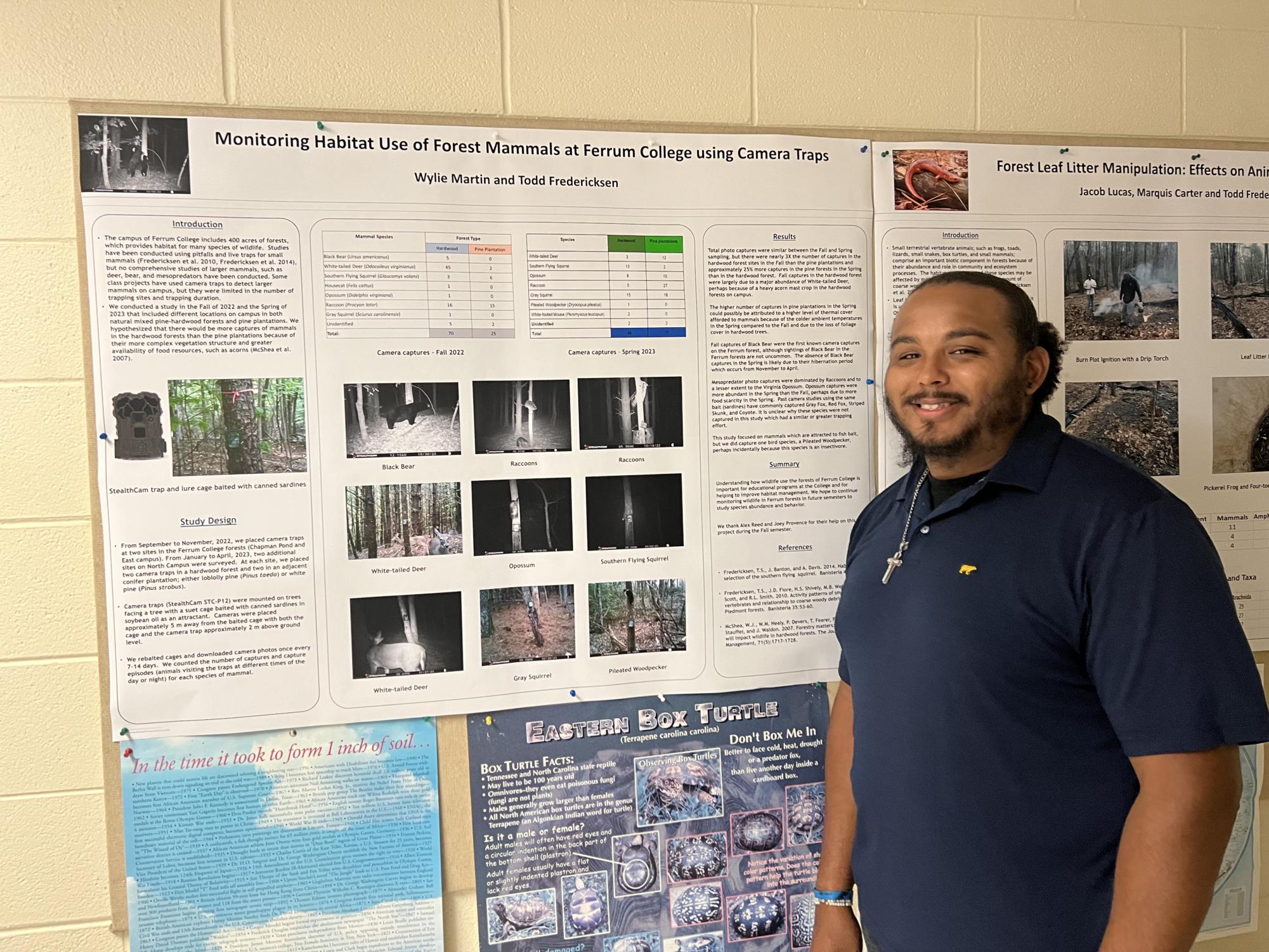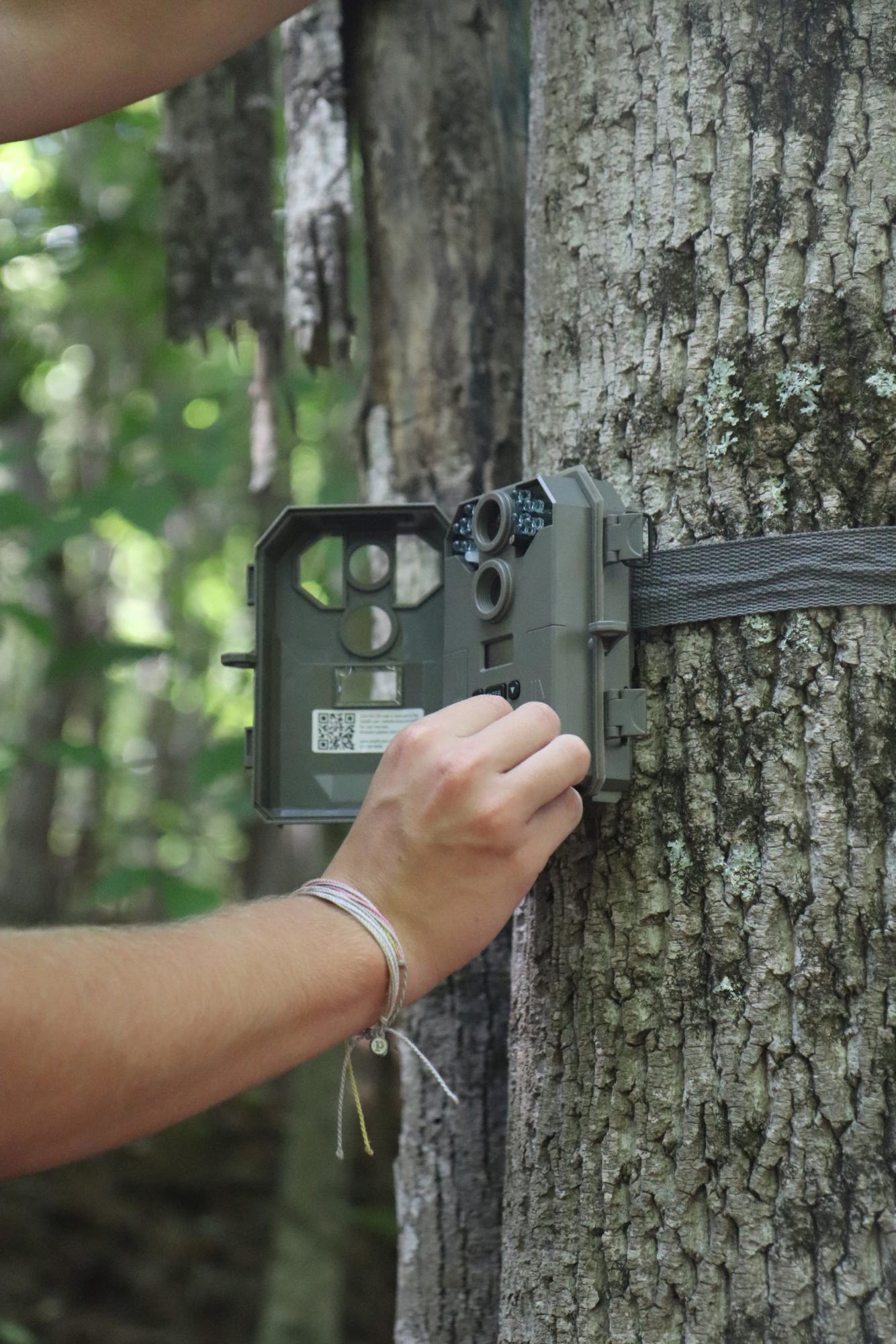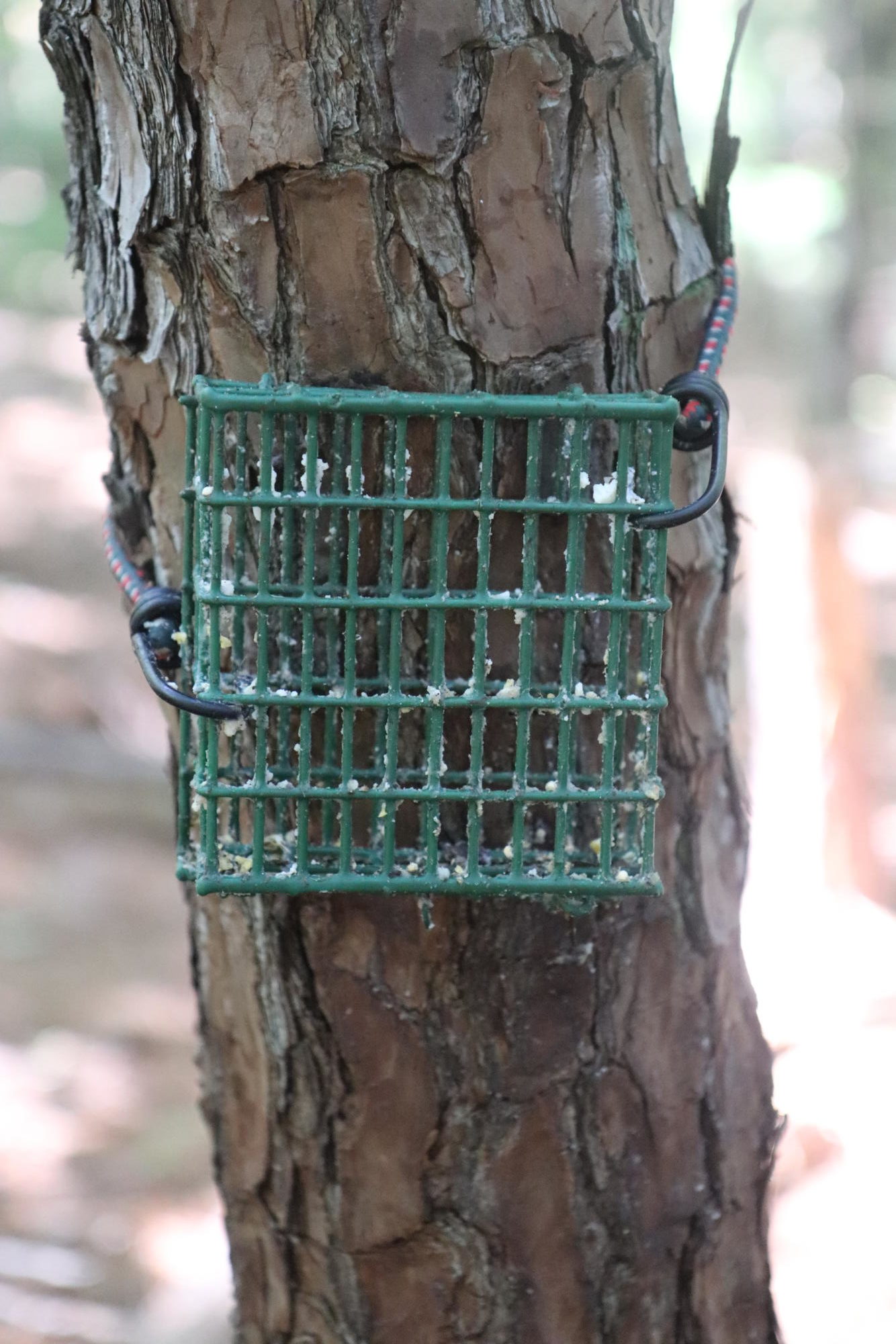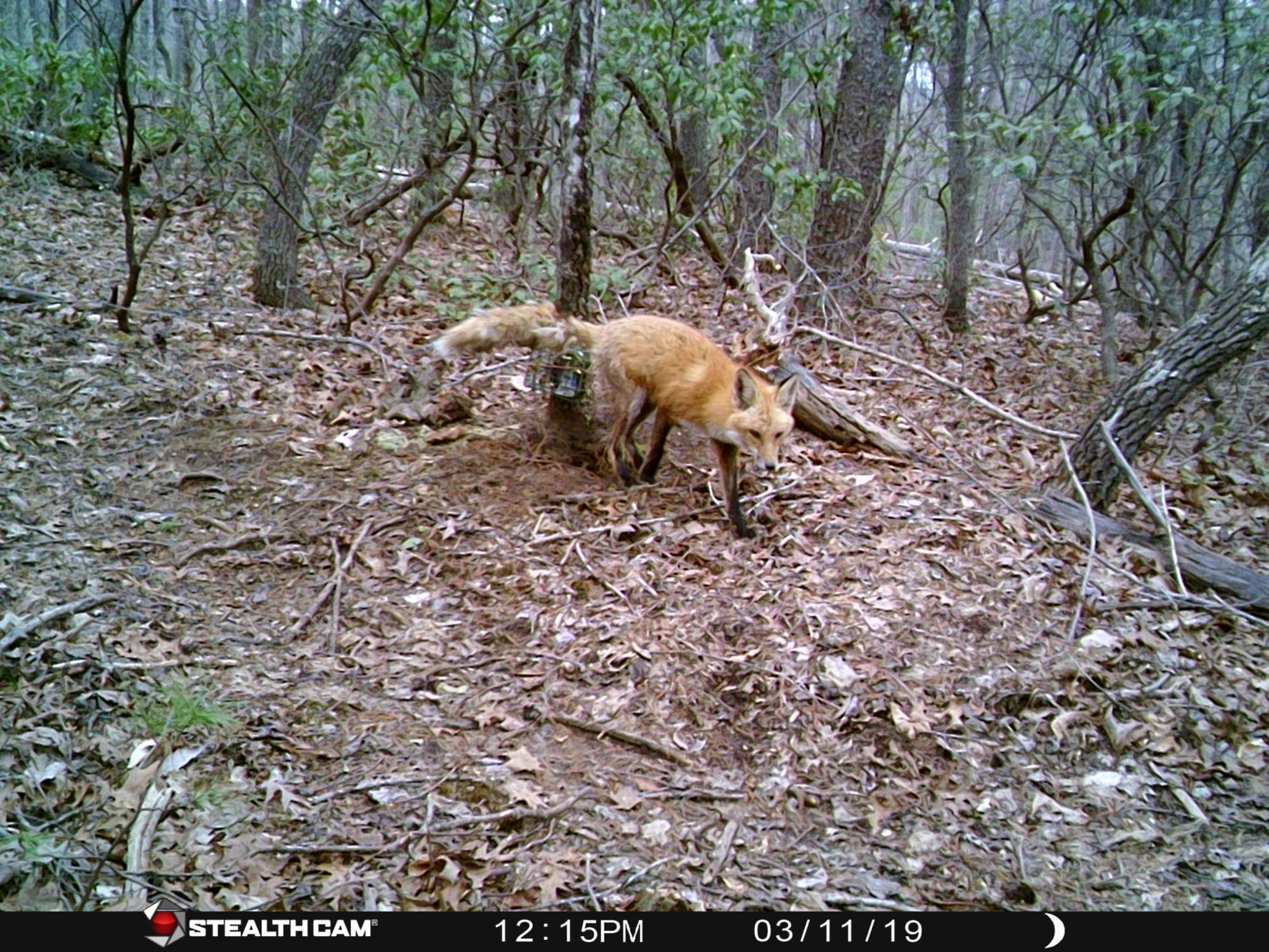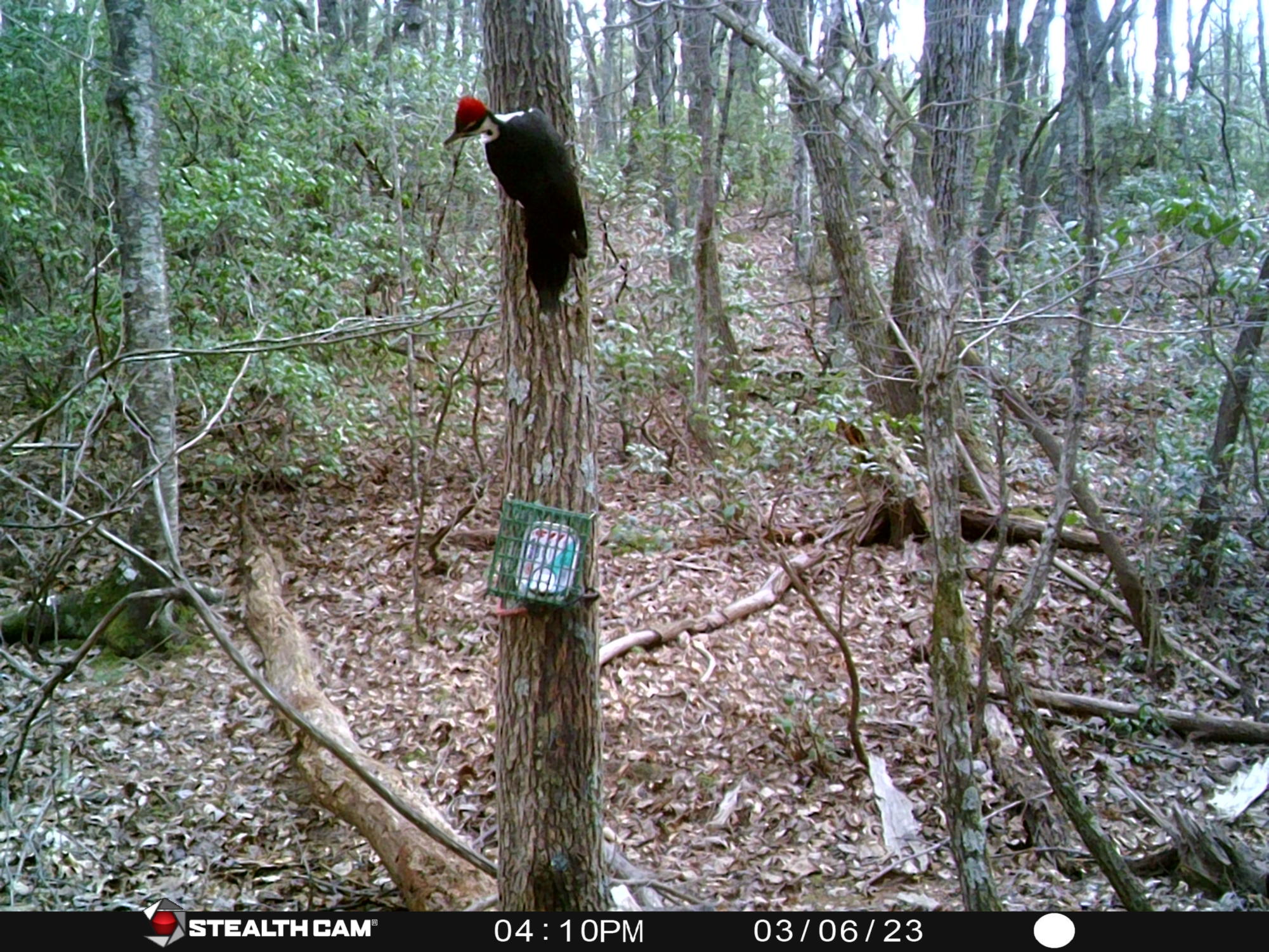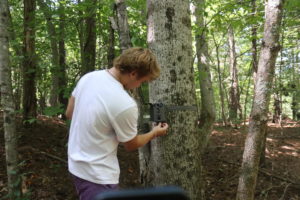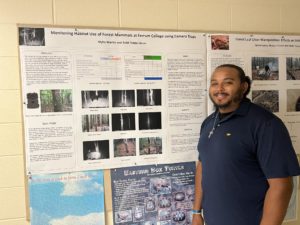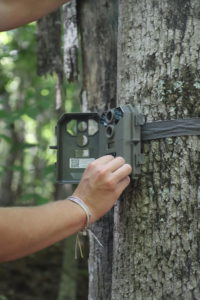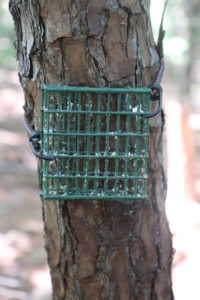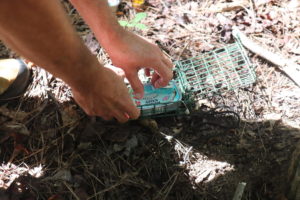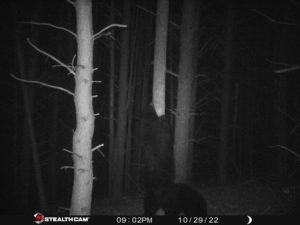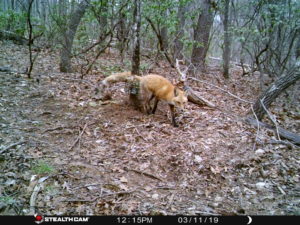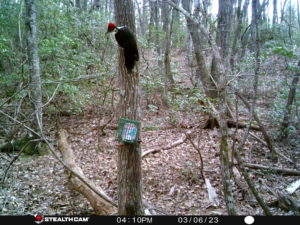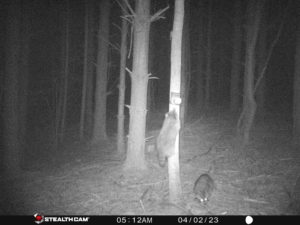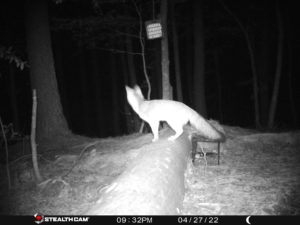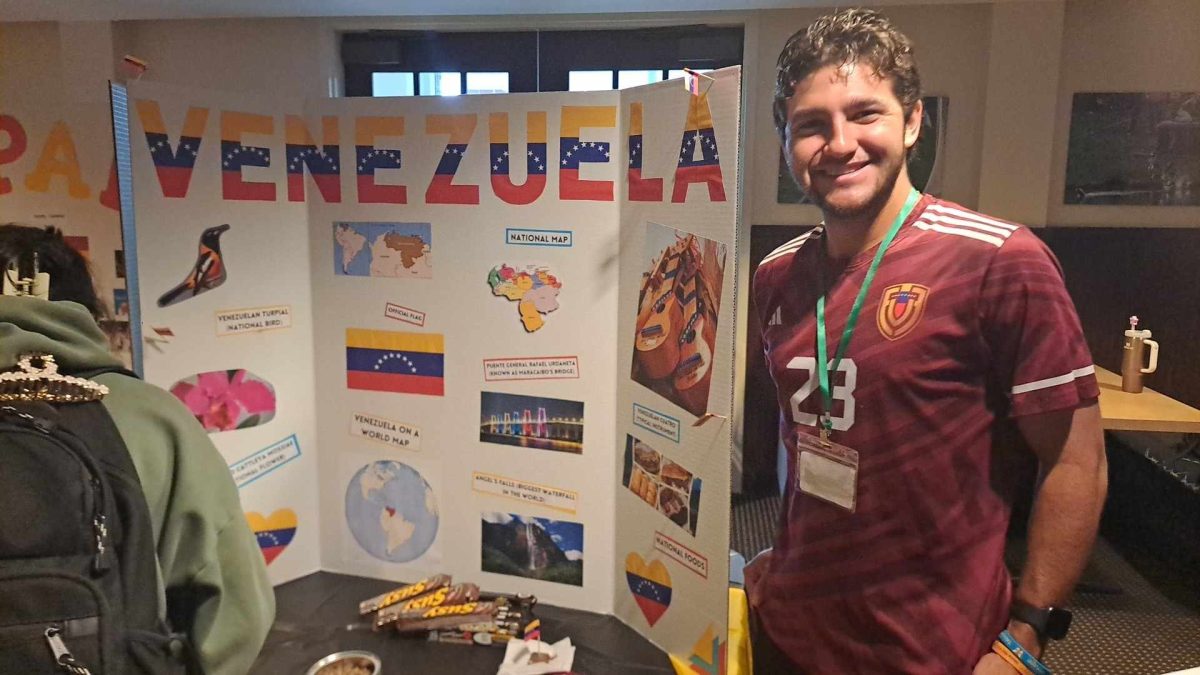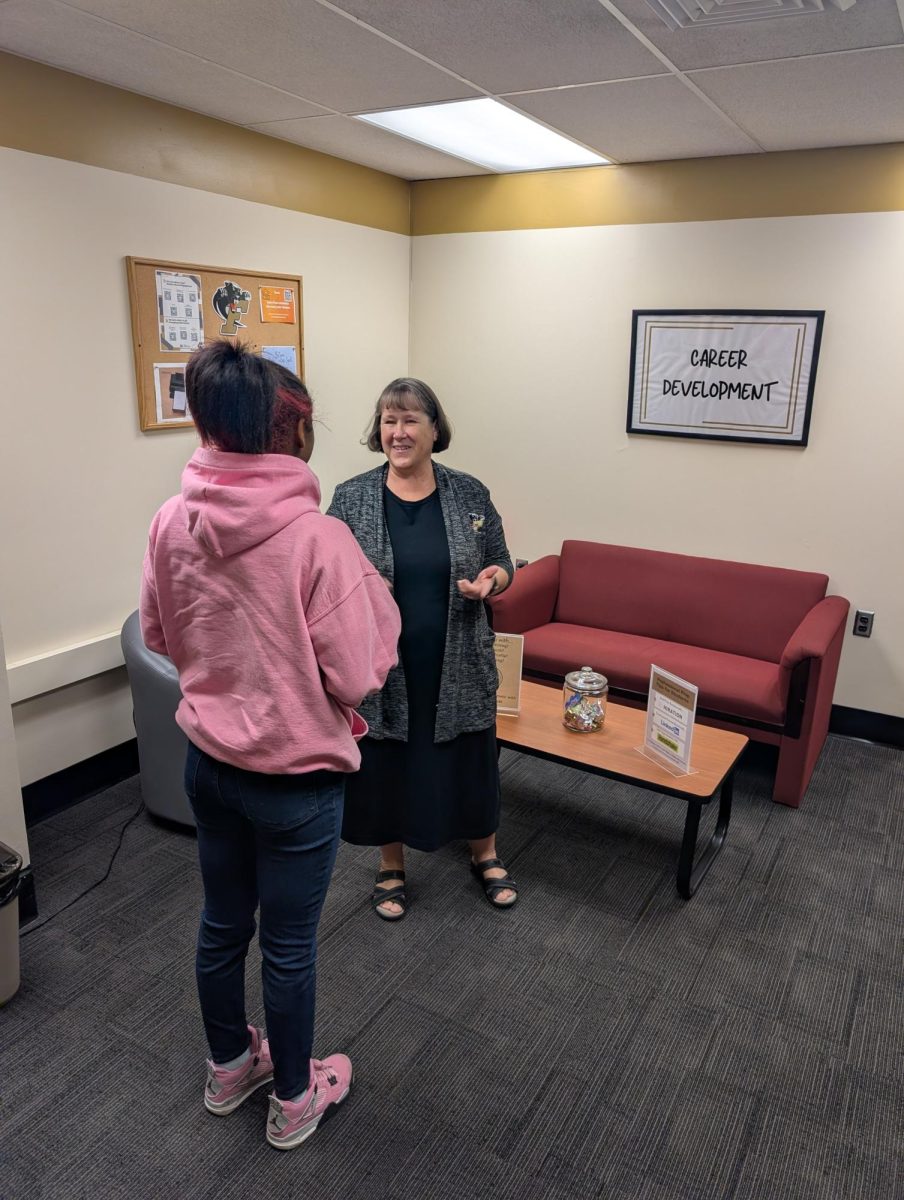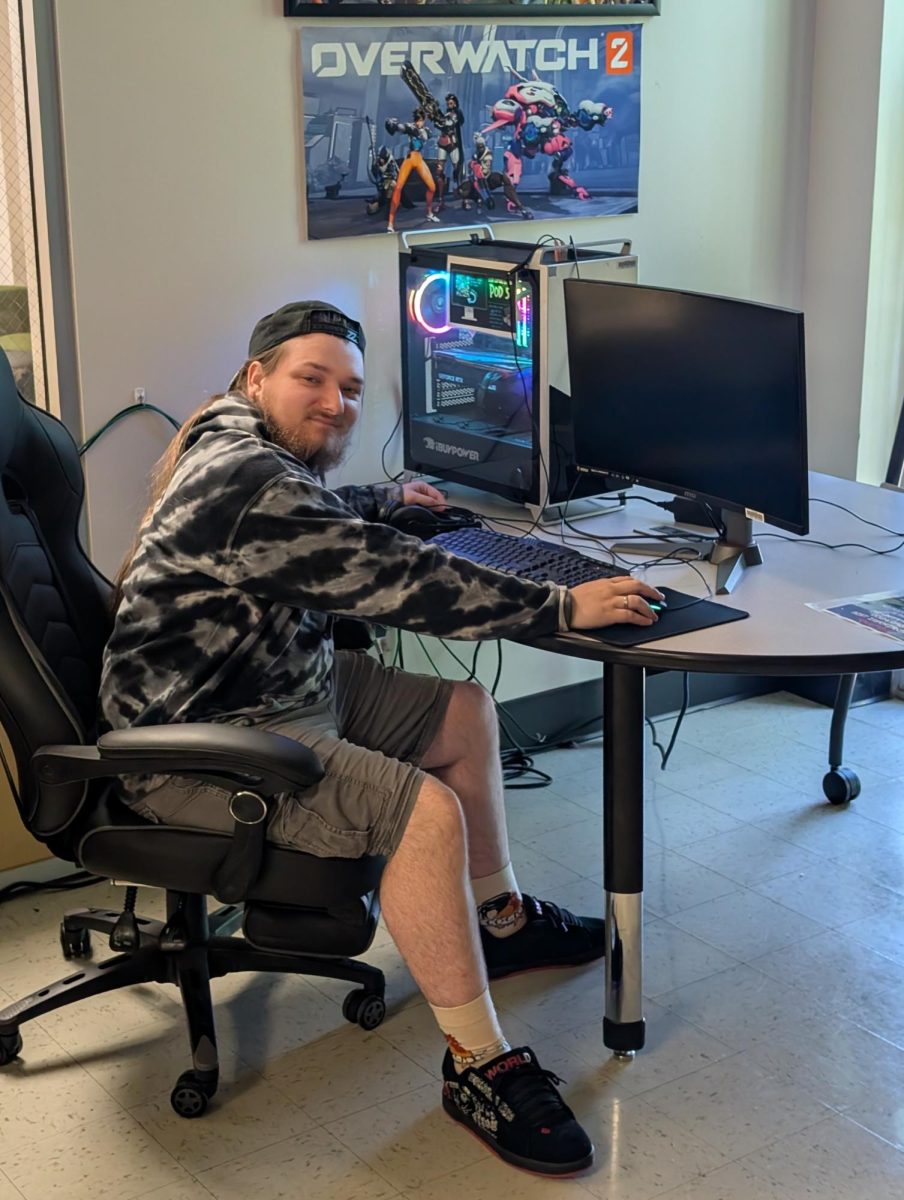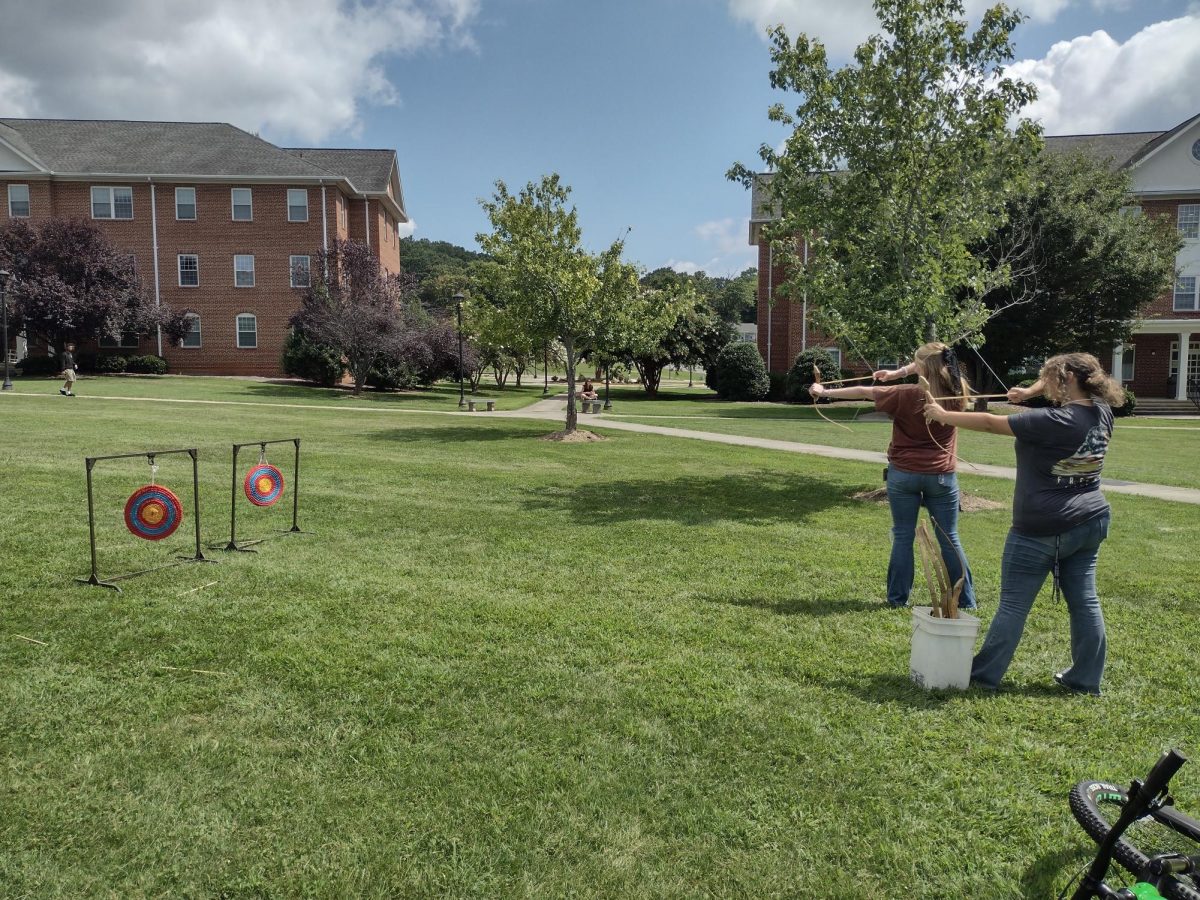Leaves crunch underfoot, and small twigs snap as Bailey Peek, freshman, and Forestry and Wildlife Professor Todd Fredericksen duck underneath a canopy of trees just off the Writers Trail by Dyer Hall.
The foliage of the woods chokes off the noise from campus, and the blue jays, squirrels, and other critters take over with their own symphony of sound. Occasionally, the faint whir of a vehicle can be distantly heard as it motors along Route 40.
It’s Friday, and it’s time to check the bait traps and cameras.
“We have four different camera traps set up,” Peek says. “We’re bait trapping, so we have two different types of bait. We have our suet and our sardines, and we have them set in a hard wood area. We’re trying to see what (animals) we can attract with different types of bait in different types of areas.”
The class is called Environmental Science Independent Research, and Fredericksen has been leading the trap campaign and keeping tabs on the results for two years now. Basically, when wildlife get near the bait, sensors in the cameras snap the animals’ photos.
The results–logging dates of encounters, animal types, type of bait used–are being compiled into a spread sheet, and then a summarized version will be presented in poster form at a conference at Radford University at the end of the month.
“It is the fourth week running (this semester)” Peek says. “We usually come out on Thursdays to check the traps, but due to scheduling, we had to come out on a Friday today.”
The whole process takes about a half hour to an hour each week.
Peet and Fredericksen traipse off into the campus woods, restock bait in the traps, check battery levels in the game cams, and switch out the SD cards in the cameras.
Then, it’s back to class and a computer to check and assemble the findings.
In total, there are four cameras and four bait traps set up in the woods. The bait is situated close to the cameras, and all four set ups are relatively close to each other.
“We want the two baits close but not right on top of each other, so we can compare which species like to come to which bait,” Fredericksen says. “The sardines have a smell to them, but the suet is more visual.”
He also says the suet will attract more birds, especially woodpeckers, but most song birds don’t go after the sardines.
“In the literature there has been some controversy, some mixed results about which bait to use in these camera traps, so that’s one of the things we’re testing,” Fredericksen says.
He says they won’t be putting an end to the debate, but they will be chiming in on the overall ongoing conversation.
Over the duration of the project, they have photographed animals ranging from raccoon and deer to black bears to grey squirrels to flying squirrels and foxes.
“In the past, we’ve gotten coyote, red fox, gray fox, striped skunk,” Fredericksen says.
He turns his attention to Peek, who has reloaded a bait trap and is refastening it to a tree.
“You good on that bungee chord?” Fredericksen asks.
Peek nods as he moves toward the camera to change out the SD card, and Fredericksen works on one of the bait traps.
“This bait was partially eaten,” Fredericksen says. “So it wasn’t a bear probably. Something was nibbling on there–probably a raccoon–maybe a white-footed mouse.”
Fredericksen cracks the top of a sardines can and loads it back into the trap.
As Fredericksen replaces the bait, Peek explains why he enjoys the work being done.
“It doesn’t really have a college class feel,” he says. “This isn’t something you’d expect at a normal college, and this is just awesome. Just having a professor who takes time out of the day–who cares enough about it to set it up.”
Another student who has been involved in the project is Wylie Martin, senior.
Martin has been associated with the project for the past two years, and he is one of the students who will be presenting findings at Radford in a few weeks.
“I’ll be talking about the data that we have so far and how we will compare it with the new data that will be collected this year (with Peek),” he says.
Martin has presented previously–at both his junior seminar class last semester and another one about Mesopredators of the Eastern Forest last year for the poster presentation event. He says, the experience has paid off on several fronts.
“(The project) has helped me understand field work better,” he says. “And not just in the aspects of herpetology, as I have done in the past. Now I will know the importance of an ecosystem, how animals use the habitats, and I will know that I will have better job opportunities in the future.”
One employment prospect may take Martin to the southern most tip of North America.
“I have spoken to a wildlife biologist by the name of Marcella Kelly, and she does camera trapping of jaguars in Belize,” he says. “I want to work with her on that project.”
Martin and Peek both hope to end up in the woods for their careers, and they both credit Fredericksen with for helping ignite their spark.
“I think that a student that is going into this field of study should at least try some type of outdoors, hands-on experience like this,” Martin says. “Learning new skills like this may seem small to some but could be a big thing in the real world. I know that with expanding your knowledge, it can get you a lot of places. Knowing amazing people such as Todd and the science faculty can get you far in life.”

